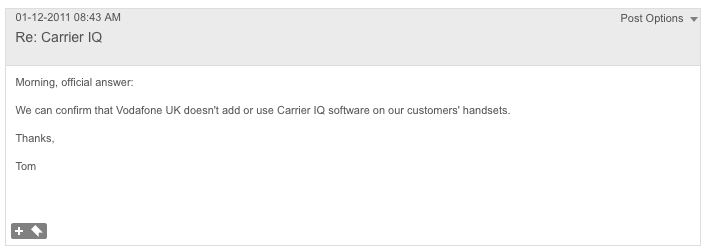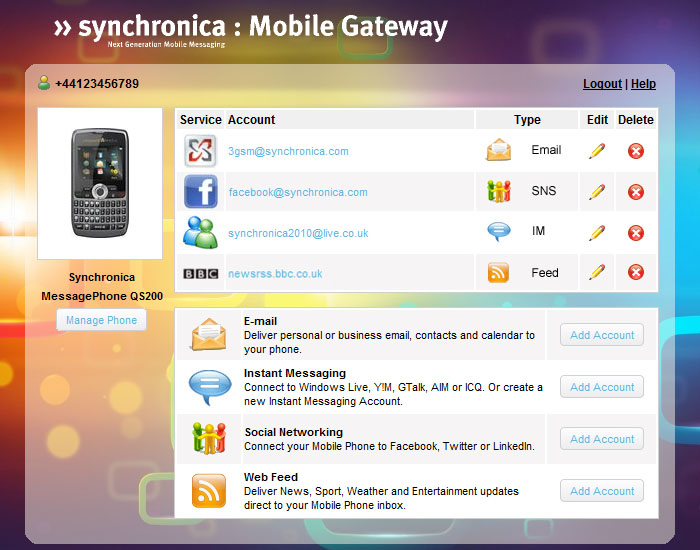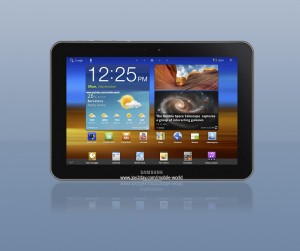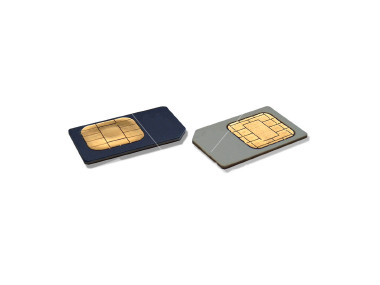I received a release today from something called the Environmental Health Trust. I would normally just bin this, but something about the tone of the mail got to me a bit – something about its attempt to forge a normal, conversational, seasonal style whilst throwing as much scary rubbish at its target market as possible.
Anyway, what I write won’t make much difference. If you are convinced there’s “something in it” when it comes to mobile phones and radiation and human health, then you’ll lap up the EHT’s stuff. If you aren’t convinced, or await evidence one way or the other and will continue to weigh the risks as you go along, then the EHT’s musings were unlikely to make much of an impression in any case. I just thought it might be interesting to look behind the articles that pop up in the mainstream media warning us of health risks. Their attention gets grabbed by this stuff, but much of it is no more than a morass of unfounded, or selectively founded, assertion and pure base insinuation. Here’s an example of the sort of rubbish that’s out there.
So, the title of the release serves as an example of the whole article’s blend of forced humour, straw man argument and appeals to “think of the children”. It is, “Ho, Ho, No! Why iPads And iPhones Are Not Kids’ Toys”. It reads, with my comments, as follows:
Cell phones and iPads rank as the most-wanted gifts of the season among youngsters, with 65% placing these devices at the top of their wish lists, according to SodaHead.com, a discussion community with more than 10 million visitors a month.
Oh right, a “discussion community” — let’s not call it a hits-chasing website, discussion community sounds a bit more informed, doesn’t it? — says that they’re the most wanted gifts. That’s good enough for me. I mean, I expect the answers to this poll were just as academically authoritative as SodaHead’s other recent cutting edge consumer research: “London Bar Installs Urinal Video Games: Great or Gross?” or “Should Fans Be Allowed to Boo?” I mean, if you’re going to base the rest of your article on the presumption that lots of kids really, really want an ipad or phone bulging out of their Christmas stocking, then it’s best to get to the best source of such market data. So let’s look at that SodaHead survey. Oh. Its poll actually shows that 65% of respondents did hope to receive an iPad2 this Xmas, but that’s a number for total respondents, nothing about “youngsters”. In fact, the site says that the “top gifts for kids include video games, preferred by 51% of respondents, and computers, preferred by 32%. Nothing in there about iPads and cell phones. It’s almost as if you’ve found the number 65% next to iPad, and decided that applies to kids, even though it doesn’t. Any way, onwards, I expect such selective reporting is just an abberration…
However, those clamoring to stuff their kids’ holiday stockings with the latest electronic gadgets would do well to ponder experts’ warnings before buying one, advises Environmental Health Trust (EHT) and Healthy Child Healthy World, non-profit research and educational groups. Would you give your child the keys to the car or a shot of whiskey just because she really wanted it?
No, I wouldn’t, because it is proven that a child driving a car, or drinking whiskey – that’s the Irish or US equivalent of actual, proper whisky, btw — is dangerous. I expect you’re about to demonstrate that this is not a straw man by demonstrating to me that the risks of a child owning an iPad are just as fully established as the link between drinking and liver disease and addiction, or as dangerous as driving a car at 30mph in a built up zone without a full appreciation of braking distances under full load.
Should you get your young child that chillin’ shiny iPad/tablet, or buy your baby her own cell phone with a handy rattle casing so that she won’t break it when it gets dropped? After all, cell phone prices have dropped, making them ideal gifts. “What harm could it do to youngsters to have such a cool, hot gadget—especially one with which they can learn to read, see movies, or just play Angry Birds? The answer is: plenty,” advises EHT founder Dr. Devra Davis.
You seem confused about this temperature thing. A cool, hot gadget, that’s also chillin’? Anyway, cool rattle casing idea. That’s a winner.
Few people appreciate that all of these wireless devices come with manufacturers’ fine print warnings not to hold them next to an adult body, or that controlled studies (http://tinyurl.com/cu4grfo) show that microwave radiation from cell phones weaken the brain’s protective barrier and produce fewer and more damaged offspring and sperm.
Also, few people appreciate that these warnings are included as a result of fierce campaigning from groups such as yours, and a natural cautiousness of governments dealing with immature technologies. They are included despite the lack of any firm evidence of health dangers from mobile phone radiation – but as a caveat to a possible, unknown danger, from what was then an immature technology. To then use the existence of the warnings as evidence of a hidden danger is perverse.
The kicker is this: All safety warnings for cell phones (e.g., “keep 0.98 inches from the body”) were designed to protect a less-than-typical user: namely, a large fellow with a big head who talks on his phone for less than half an hour a day. According to a recently published scientific report from EHT (http://tinyurl.com/3ngll83),
ooh, a scientific report, no less, from the independent body the EHT. Excellent.
children’s heads absorb twice as much microwave radiation from cell phones as adults. Radiation from cell phones carried in shirts or pants pockets of adults is four to seven times higher than the guidelines set by the Federal Communications Commission (FCC) in the U.S. For the smaller bodies of children, of course, levels would be even much greater
What does even mean? Radiation from a cell phone carried in a pocket is the same as radiation from a cell phone anywhere else. Do you mean specific absorption rate is higher than guidelines? In any case, those guidelines have about a 50x safety limit.
The reason for the discrepancy, EHT says, is that the process to determine radiation from cell phones is modeled on a 6-foot 2-inch tall, 220-pound man, with an eleven-pound head. Because this large skull represents only about three percent of the population, the test cannot accurately predict the radiation exposure of the other 97 percent, including children, nor does it even try to estimate exposures from pocket use.
“The standard for cell phones has been developed based on old science, old models and old assumptions about how we use cell phones, and that’s why they need to change and protect our children and grandchildren,” said Dr. Davis.
Emotive language, but in fact the industry has tested SARs on a variety of models of the human head, big and small. In fact, one international study found that “SAM (your unrepresentative man monster) produced a higher SAR in the head than the anatomically correct head models. Also the larger (adult) head produced a statistically significant higher peak SAR for both the 1- and 10-g averages than did the smaller (child) head for all conditions of frequency and position”. We’ve all got a study we can point to, right?.
A New Zealand study led by researcher Mary Redmayne of the School of Geography, Environment and Earth Science at Victoria University in Wellington documented the looming dangers for young teens. Redmayne found that a majority of New Zealand adolescents broke school rules and carried a switched-on cell phone in their pants pocket for more than six hours daily. Even where schools ban phones, more than two in five middle schoolers regularly sent texts from within a side pocket; a fifth carried one for more than 10 hours a day, and used it in-pocket. This impressive ability to text without looking could well impair future fertility and/or reproductive integrity.
Parents may not be surprised to learn that a group of high risk-takers was identified. For these rule-breaking middle schoolers, bans on school use of cellphones prompted high texting rates, carrying the phone switched-on for more than 10 hours per day, and using them in-pocket.
Not sure what the relevance of this is. It just looks like a general appeal to parents’ fear of teenage behaviour. Tell you what, parents have been telling teenage boys to keep their hands out of their pockets ever since we invented pockets. Blindness was traditionally the threatened biological sanction. Infertility might work, too, however.
Dr. Davis also calls parents’ attention to another iPad fine print warning that states, “a small percentage of people may be susceptible to blackouts or seizures (even if they have never had one before) when exposed to flashing lights or light patterns such as when playing games or watching videos… Discontinue use of iPad and consult a physician if you experience headaches, blackouts, seizures, convulsion, eye or muscle twitching, loss of awareness, involuntary movement, or disorientation. To reduce risk of headaches, blackouts, seizures and eyestrain, avoid prolonged use, hold iPad some distance from your eyes, use iPad in a well-lit room, and take frequent breaks.”
You’re just throwing any old manure at the wall now. TV news bulletins warn me there will be flash photography when they cover a red carpet premiere. Does this “prove” the hidden danger of TV, or red carpets? If you stare at a screen for hours, you may get a headache or sore eyes – what’s this got to do with radiation absorption?
Consumers can find this and more on the iPad safety pamphlet. “Whoever wrote this probably had in mind the adult who can fork over $400 to $500 for the iPad,” advises Dr. Davis. “Yet nowadays, even babies and toddlers are learning to read from wired devices
(wired? That’s alright, then.)
and falling asleep to white noise played from phones placed under their pillows. A child’s brain, healthy or otherwise, is cased in a thinner skull; that’s why they absorb more microwave radiation. The brains of children with learning problems, autism or other neurological disorders may be more vulnerable to damage than those of their healthy friends and family members.”
(They may be. They may not be. But let’s stick with the may. What’s the relevance, beyond cranking up the emotional ratchet, of including these groups of children? Is it to further exploit the fears of parents who already feel vulnerable – widen your addressable market, as it were?)
The iPad safety advice doesn’t consider these issues,
It doesn’t? Amazing.
but does include information about exposure to radiofrequency energy. The pamphlet notes, “If you are…concerned about exposure to RF energy, you can further limit your exposure by limiting the amount of time using iPad WiFi +3G in wireless mode…and by placing more distance between your body and iPad Wi-Fi +3G.” Children simply cannot keep “more distance” between themselves and these devices; their arms are too short.
Now I’m laughing. How long is a child’s arm? Long enough to mitigate radiation absorption from an iPad, do you think? What about people with short arms. Should they be worried too? I’m a short guy (you can tell by the aggressive nature of this post that I have issues about that already). Should I do some stretching exercises, do you think?
“There’s no denying these gadgets are fun; my kids love them too,” says Rachel Lincoln Sarnoff, Executive Director and CEO of Healthy Child Healthy World.
You sound normal, Rachel I’m willing to listen to you, without a doubt, especially as you so selflessly introduce your own children into the discussion, as a means of furthering your “normal, concerned Mom” credentials.
“But these technologies are developing faster than our ability to understand potential health impacts. We’re not asking parents to not buy or use them, we’re simply asking them to take precautions. It’s better to be safe rather than sorry when it comes to our children’s health.”
“Better to be safe than sorry” is what lead us to the publication of these product warnings and all the small print that now causes you such concern, and that you now use to arouse fears amongst parents of delinquent and disabled children. Still, you knew that, didn’t you – it’s best to keep the pot boiling, after all.
“The best present a parent can give their child is the gift of safety,” says Dr. Davis.
Or, you know, the gift of analysing risks appropriately, and not succumbing to emotive scare tactics, such as those piggy-backing on selectively credited scientific reports and dubious consumer research. Happy Christmas.









